“I alone know of a river running
where the nine adders keep watch”
— The nine herb charm, Lacnunga manuscript, 10th century
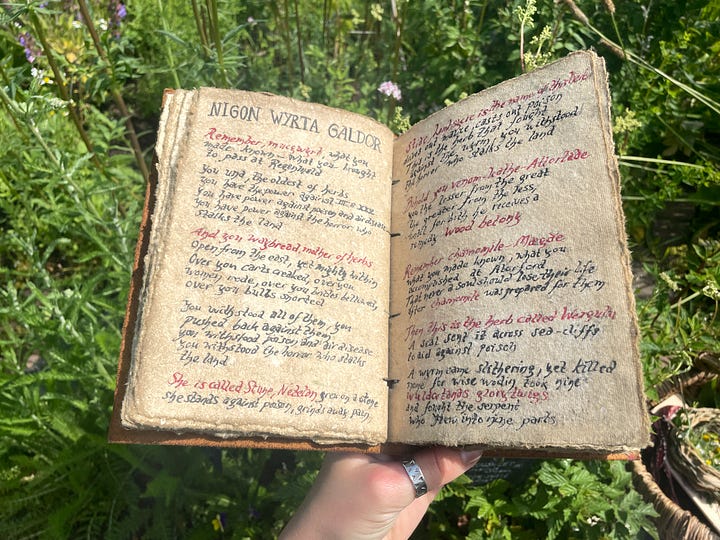

There’s a charm tucked inside a strange manuscript in the British Library. It is known as the Lacnunga manuscript, a compilation of various recipes and remedies dating back to 1000AD Anglo Saxon England. Its exact origins are uncertain, but the manuscript was compiled by at least two scribes who recorded a mixture of folk remedies and Christian healing practices in both Old English and Latin. Amongst its many curious entries, there’s one in particular, that caught my attention: the Nine Herb Charm.
I stumbled upon it while searching for a theme for my Herbology course’s physic garden project— I was immediately fascinated by the plants used in the charm, some of whose identity we’ll never know for certain. Within a few days, I was delving into Old English translations, trying to decipher which plants to cultivate in my little garden plot. Since then, the charm has taken me on quite the journey — from sowing its seeds and delving into its historical roots, to crafting a cream inspired by its words.
In the process, I’ve been experiencing something quietly magical through the act of reawakening an early medieval charm within this modern world.
To lift the charm out of the archive, not as a curiosity but as a living tradition and speak with these nine herbs—not just for what they do, but for who they are;
To explore why re-enchantment matters now, when the world is burning and extraction dominates relationship to the land;
Finding and weaving words of this charm into my studies has been a true delight.
I hope you’ll enjoy this ramble about the Nine Herb Charm.
It’s funny to me, in a way, that this magical charm, likely passed down through generations by word of mouth, ended up preserved in such a patchwork, slightly chaotic manuscript. A jumble of remedies and incantations, the Lacnunga is certainly not a polished archive— and I love that.
I can spend hours poring over interpretations in papers and books, but in the end, my intuition reminds me that this charm is just a small fragment of a much larger history — one we’re lucky to have at all. While research can reveal so much, it’s the act of reawakening the charm, of working with it directly and intuitively, that brings its enchantment fully to life.
Like this beautiful interpretation and translation of it:
Nygon Wyrt Galdor / Nine Herb Charm
{modern English / partially a personal interpretation}
Mugwort (Mucgwyrt)
—Remember, Mugwort, what you made known
what you brought to pass
Una, the oldest of herbs.
You have power against three and against thirty,
You have power against poison and against air disease,
You have power against the horror who stalks the land
Plantain (Wegbrade)
—And you Waybread, mother of herbs,
Open from the east, yet mighty within.
Over you carts creaked, over you women rode,
Over you brides bellowed, over you bulls snorted.
You withstood all of them, you pushed back against them
You withstood poison and air disease
you withstood the horror who travels over land.
Nettle (Stune) / Stonecrop ?
She is called Stune; she grew on a stone,
She stands against poison, she grinds away pain.
Lombsycre (Lamb’s cress)
Stiðe, Lombsycre is the name of this herb;
drives out malice, casts out poison.
This is the herb that fought against the wyrm,
you withstood the horror who stalks the land.
Venom-loather (Attorlaðe)
Behold, you Venom-loathe, Attorlaðe
You the lesser from the great,
the greater from the less,
until for both he receives a remedy.
Wood betony
Chamomile (Mægðe)
— Remember, Chamomile,
Mægðe
what you made known,
What you accomplished at Alorford,
That never a soul should lose their life to disease
After Chamomile was prepared for them
Crab-apple (Wergulu)
— Then, this is the herb that is called Wergulu.
A seal sent it across the sea-cliffs,
To aid against venom
These nine plants defeat nine venoms!
A wyrm came slithering, and yet he killed no one,
for wise Woden took nine
wuldortanas / glory-twigs
and fought the serpent,
who flew into nine parts!
There, apple overcame venom:
There, the wyrm would never find shelter.
Wudusuraepple
forest sour apple
You have power against three and against thirty,
You have power against poison and air diseases
You have power against the horror who stalks the land
Against a spell of malice.
That she the serpent would never dwell in the hearth.
Chervil (Fille) & Fennel (Finule)
Fille and finule _
Chervil and Fennel, a mighty pair.
They were created by the wise Lord,
As He hung; Holy in heaven
he sent them from the seven worlds,
for wretched and wealthy alike.
The Power of Nine Herbs
Now these nine herbs have power against nine evil spirits,
Against nine poisons and against nine air diseases:
Against the red poison, against the foul poison,
Against the yellow poison, against the green poison,
Against the black poison, against the blue poison,
Against the brown poison, against the crimson poison.
Against wyrm-blister, against water-blister,
Against thorn-blister, against thistle-blister,
Against ice-blister, against venom-blister.
Against harmfulness of the air,
against harmfulness of the ground,
Against harmfulness of the sea.
If any poison comes flying from the east,
Or any from the north, or any from the south,
Or any from the west among the people.
It is said, Christ stood over illness of every kind.
Yet, I alone know a stream,
Guarded by nine adders
May all the weeds spring up from their roots,
The seas ebb, and all salt water,
When I blow this poison from you.
꩜` ~ ✣ ~ ꩜` ~ ✣ ~ ꩜` ~ ✣ ~ ꩜` ~ ✣ ~ ꩜` ~ ✣ ~ ꩜` ~ ✣ ~ ꩜` ~ ✣ ~ ꩜` ~ ✣ ~ ꩜` ~ ✣
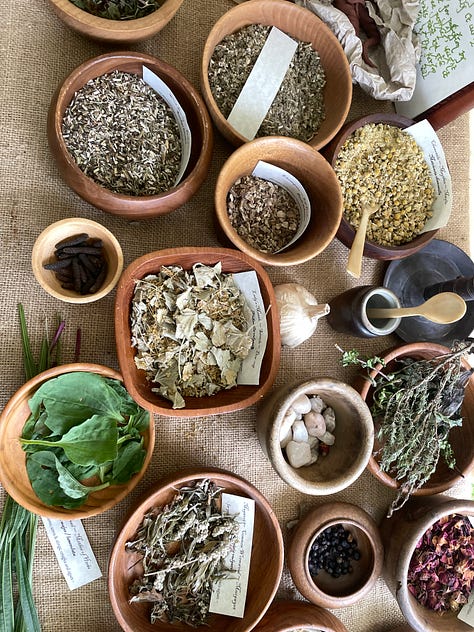
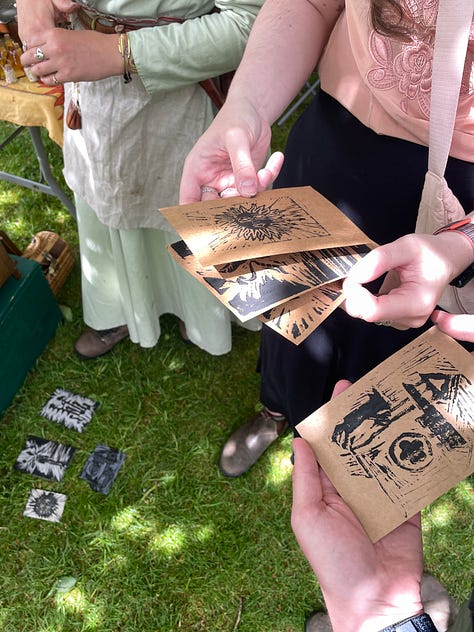
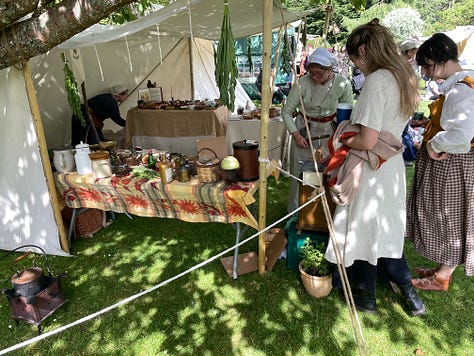
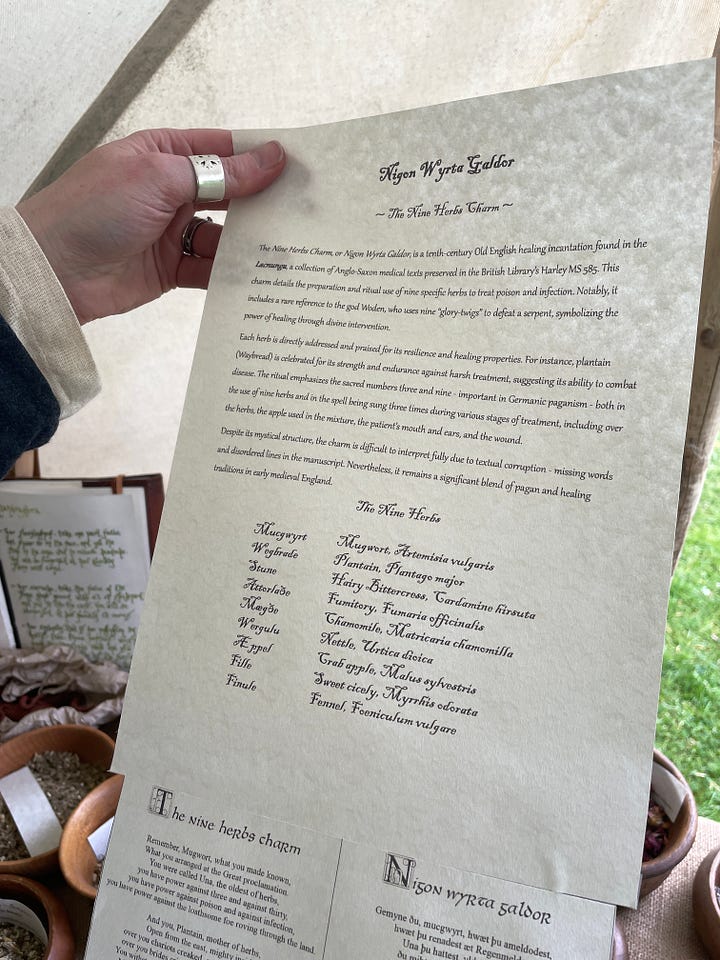
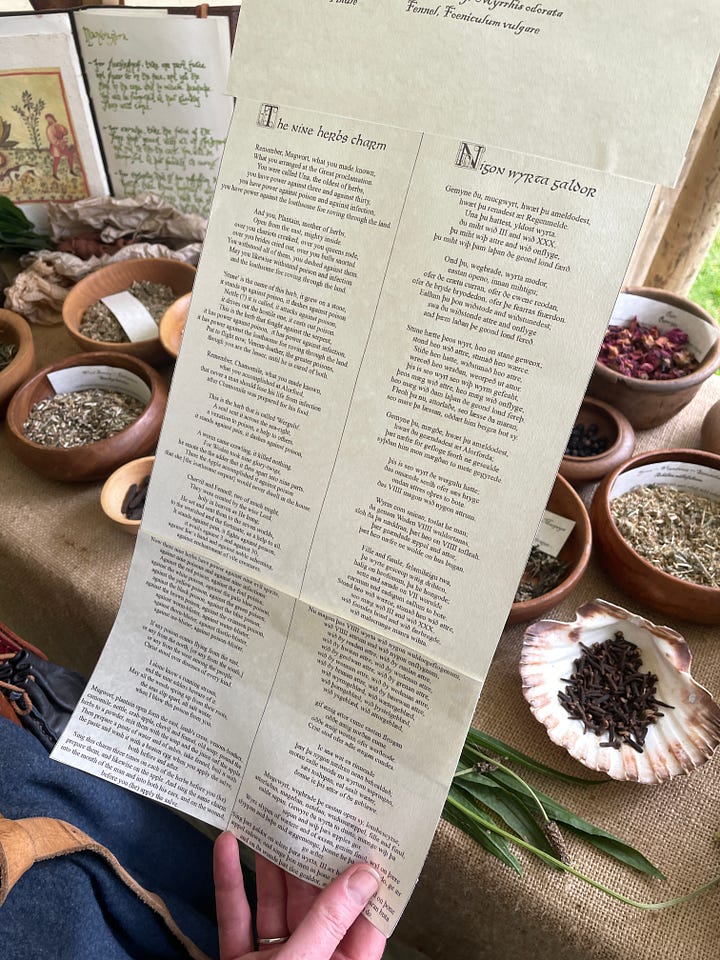
One blustery May weekend, my friends and I were visiting Traquair medieval fayre. There I find the fantastic re-enactors Historical Herbalists and of course Jaye has a print out of the Nine Herb Charm. It made me smile, because in that moment, I was reminded that, in its own quiet way, the charm is still very much alive.
꩜` ~ ✣ ~ ꩜` ~ ✣ ~ ꩜` ~ ✣ ~ ꩜` ~ ✣ ~ ꩜` ~ ✣ ~ ꩜` ~ ✣ ~ ꩜` ~ ✣ ~ ꩜` ~ ✣ ~ ꩜` ~ ✣
Herbology Course Interpretation ✴︎

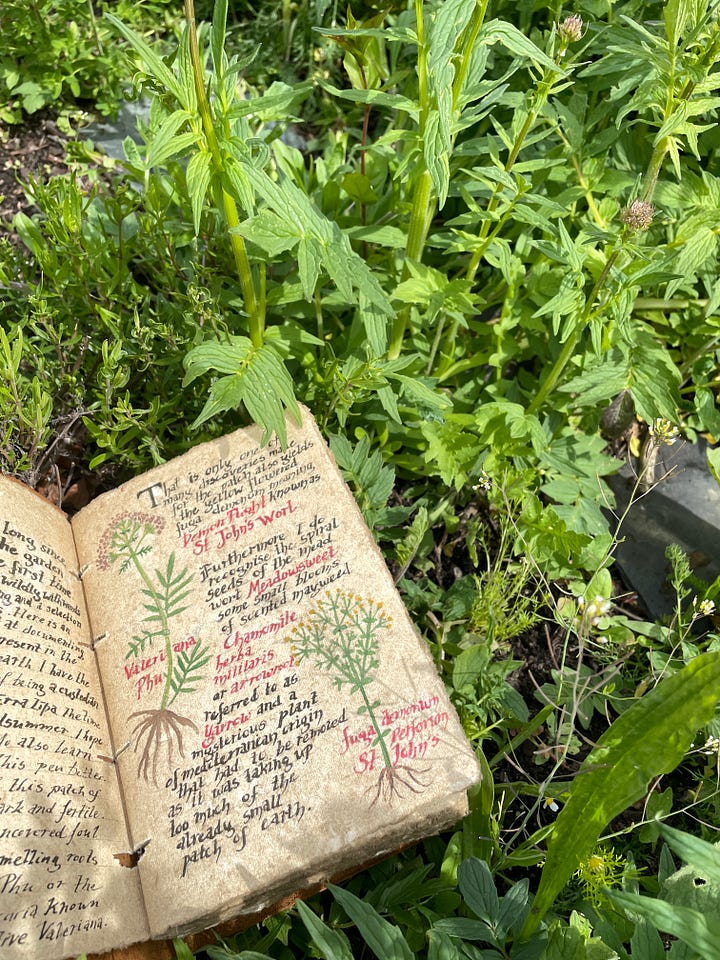
Manuscripts (from Latin manus = hand, scriptus = written) are hand-written documents from before the age of printing. They’re fascinating objects, sometimes full of interesting notes in the margins, illustrations and even the fingerprints or doodles of people who made them. Of course they’re also culturally biased, since most were made in monasteries, places of power, where literacy was rare and tightly controlled.
For the project I wanted to hand write my observations, so I did this in form of a manuscript (I didn’t make the book btw). It felt like a nice immersive way of documenting the time with this patch of earth and its plant inhabitants. I’ve made a little vlog documenting some parts of the journey, you can watch it below.
Hope you enjoyed this little ramble of some sorts
~ ‘ With love,
Johanna ❊
❖ Support my work ❖
‘A Most Certain, Stange and True Discovery of a Witch' is a series of original woodcuts exploring the connections between fungi folklore and witchcraft. It is published as a booklet that follows the style of historical witch pamphlets, which were printed at the time to document horrifyingly detailed accounts of witch trials.
The booklet looks at the late 16th-century witch hunts in Europe, the outlawing of herbal folk knowledge and its particular impact on women. It also includes snippets of fungal lore and medicinal uses.

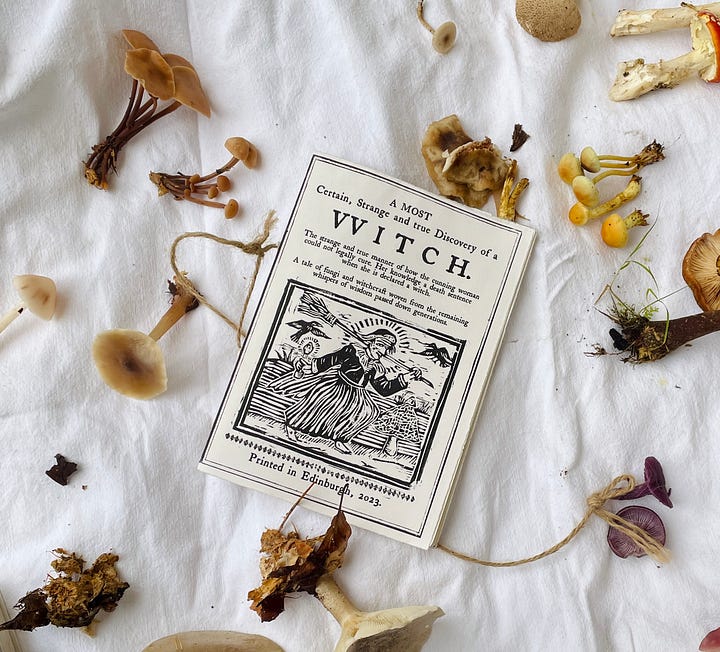
✥ resources & inspirations ✥
Hopkins, Joseph S. 2024. The Nine Plants Spell: Nigon Wyrta Galdor. Olympia: Hyldyr.[NIGON WYRTA GALDOR; Buy the publication The Nine Plants Spell]





I love this incantation! I came across it a few years ago and it really fascinated me. Thanks for your interpretation.
Excellent read, thank you!